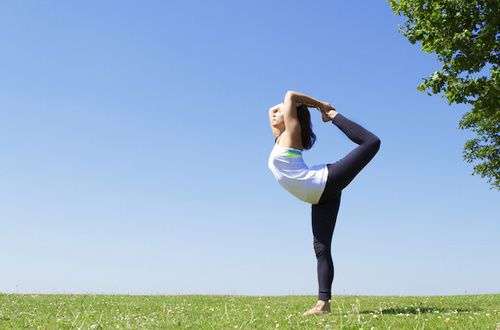Antigravity yoga: origins, practices, benefits
Antigravity yoga , a discipline created by Christopher Harrison, helps to defy gravity and to regain well-being and agility. Let’s find out better.
> Meaning of Antigravity yoga
> Origins and philosophy of Antigravity yoga
> The practice
> The benefits of Antigravity yoga
> The teachers and the schools

Antigravity yoga meaning
Antigravity in English means ” against gravity “. Antigravity yoga is a particular style of yoga, which seems to be the very latest in chronological order born from the encounter of millenary oriental wisdom with the sparkling oriental mind; it is practiced with the help of special “hammocks” that allow, in fact, to “defy gravity”.
Origins and philosophy of Antigravity yoga
Antigravity yoga is a fitness regimen designed to increase the overall level of health and agility in people who practice it . It is a discipline created by Christopher Harrison – an acrobatic dancer from Broadway – who wanted to combine acrobatic practices with the original philosophy of yoga. His desire is to allow everyone to experience the pleasant sensation of being suspended in the air , and to reap the physical benefits that derive from the classic yoga positions ( asana ) thanks to the facilitation of the fabric hammock support.
Techniques taken from dance , Pilates and the American discipline called Calisthenics have been added to the typical yoga asanas to create a complete work that models the body by realigning the compressions due to gravity . The concept of the aid of tools to facilitate the achievement of the position recalls the style of Iyengar yoga , but the difference undoubtedly is in the adherence to its original principles. In the Antigravity technique, the reference to yoga is given more by the search for total body relaxation –and therefore a liberation from stress and mental fatigue – than from the search for fusion with the absolute; the practice is almost totally a fitness discipline that perhaps has only the name in common with yoga itself.
Practice
The Antigravity yoga session lasts about 45 minutes and is practiced with the help of a special hammock hanging from the ceiling that allows the body to perform the movements without the constraints due to the force of gravity. TO
sana borrowed from yoga, movements of the pilates method , and exercises typical of competitive artistic gymnastics accompany the lesson always carried out with the help of the hammock. The method is simple, safe and fun , the instructors assure: there is no danger, it is an acrobatic discipline open to all.
Music , usually New Age to promote relaxation, accompanies the whole session, at the end of which there is always a long relaxation completely suspended and abandoned in the hammock which, in this case, acts as a real bed.
The benefits of Antigravity yoga
The benefits of Antigravity yoga are linked to the fact that the muscular effort is performed without being borne by the spine and therefore, even in the most complicated positions – think of the inverted positions of yoga – there is no danger of trauma.
In addition to not causing trauma, the fact of being “hung” on a support contributes to the stretching of the spinal column with consequent benefit of the entire musculoskeletal and nervous system. The muscles that are also strengthened, thanks to the proposed sequence of exercises, are those of the lower and upper limbs , of the abdominal band and the so-called “core muscels”, the supporting muscles: all developing elegance of movement, fluidity, sense of balance and greater perception of one’s body.
But, above all, the proponents of this discipline emphasize that it is extremely fun!
The teachers and the schools
Christopher Harrison
Contemporary instructor . Harrison trained as a professional gymnast and a Broadway acrobatic dancer. His knowledge of the body is also deepened by studies in kinesiology and physiotherapy.
The encounter with yoga dates back to 1990 in an Ayurvedic college in India, followed by the practice of integral yoga at the center of New York. Pilates studies complete the picture of this eclectic and fruitful artist-gymnast.




























+ There are no comments
Add yours